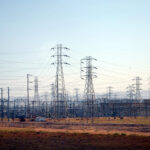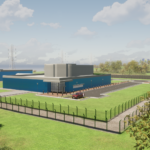China responds to Fukushima
By Yun Zhou | June 28, 2012
Before the Fukushima nuclear disaster, China had a relatively small fleet of 14 nuclear reactor units with a relatively small capacity — less than 12 gigawatts of electricity — but the country had big nuclear plans. It led the world in new reactor construction, with 27 units under way, five units approved and awaiting construction, and another 16 units scheduled. If all current construction went forward as planned, the country would be ensured of reaching its original target of 40 gigawatts of nuclear-generated electric capacity by 2020.
The National Development and Reform Commission planned to update the country's medium- and long-term development plans after a National People's Congress meeting in March 2011. The earthquake and tsunami that rocked Japan and gravely damaged the Fukushima Daiichi Nuclear Power Plant stopped the update cold.
In the immediate aftermath of the Fukushima disaster, the Chinese government claimed it would not change its nuclear power development policy. Even so, the government took actions summarized as the "four guidelines." Under those guidelines, the government would:
- Conduct safety inspections at all nuclear facilities.
- Strengthen the approval process for new nuclear plant projects.
- Draft a new nuclear safety plan.
- Adjust the medium- and long-term development plan for nuclear power, suspending new project approvals until a nuclear safety plan could be enacted.
Although the Chinese government reaffirmed nuclear energy as an indispensable resource, the suspension of new nuclear projects sent shock waves through the ranks of international nuclear vendors and investors. Since then, China's media have reported several scenarios for a potential restoration of nuclear construction. Finally, after 15 months of waiting, the State Council approved the nuclear facility safety inspection report and the new nuclear safety plan proposed by National Nuclear Safety Administration. The full text of the inspection report and safety plan was released to the public in June. The new medium- and long-term nuclear development plan proposed by National Development and Reform Commission is, however, still pending approval.
As China's new nuclear regulatory system goes forward, reactors that are already operating and under construction will be spared from major redesign, but future reactor projects will face re-engineering. Additionally, it appears that the Fukushima disaster may lead China to adopt newer, third-generation (or Gen III) reactor designs created by Chinese firms, allowing China to wean itself from purely foreign reactor technology much more quickly than was expected pre-Fukushima.
The Fukushima response to date. Soon after the Fukushima accident, China planned safety inspections for all of the country's nuclear facilities, including commercial reactors under construction; the inspection process was officially completed in August 2011. Before the comprehensive inspection report was released, inspectors told the media that no major incidents of non-compliance with safety regulations were found.
At the end of 2011, the National Nuclear Safety Administration finished and submitted the nuclear safety inspection report and a draft of a nuclear safety plan to the State Council, which primarily oversees ministries' administrative activities, formulates administrative regulations, and drafts and implements national economic and social-development plans. The State Council reviewed both reports in executive meetings in February but, surprisingly, approved neither, requesting further investigation and modifications. Normally, proposals or reports brought to the executive meeting of the State Council are heavily reviewed, with negotiations among important stakeholders in government, but very few are rejected.
Both reports were reviewed again and finally approved on May 31. According to the State Council, the inspection report indicated that most of nuclear power plants meet the current domestic safety regulations and are line with International Atomic Energy Agency safety standards and requirements. However, some existing nuclear power plants will have to meet new standards on flood protection, and some research reactors will need to meet new earthquake requirements. The inspections revealed four major nuclear safety issues, including a lack of severe accident mitigation guidelines at some nuclear power plants. Overall, the inspection report noted 16 safety areas that should be addressed and remedied in three years, mainly involving emergency backup systems, flooding prevention, and safety margins related to earthquakes.
In June, the National Nuclear Safety Administration released its nuclear safety plan in full text; it provides safety goals not only for commercial nuclear plants, but also for research reactors and nuclear fuel cycle facilities. The plan requires core damage and large radioactive release frequencies for newly constructed units to be less than one event in 100,000 reactor years and one event in one million reactor years, respectively. In addition, the safety plan calls for elimination of large radioactive release incidents for units constructed after 2016.
Meanwhile, the National Development and Reform Commission is still working on setting a new goal for China's medium- and long-term nuclear power development plan; this goal will direct China's near-term pace for building nuclear power plants. As a part of China's post-Fukushima actions, a first draft of a proposed atomic energy law was also submitted to the Ministry of Industry and Information for review. The law aims to provide a legal basis for all nuclear-related activities, including those relating to nuclear security and non-proliferation.
Taken together, these changes in policy strongly indicate that the Chinese government now considers nuclear safety a national priority and is prioritizing safety over the economic and environmental benefits of nuclear power.
Impacts on China's nuclear industry. China has 22 second-generation (or Gen II) type reactors under construction. The question was whether those units will be regulated according to the standards and requirements of the new safety plan. Apparently, they will not. Minor design changes and upgrades to emergency systems and procedures will be adopted in response to the findings of the post-Fukushima inspection report.
For the 14 Gen II units planned before the Fukushima accident but yet to begin construction, it will be a different story. These planned units will need to meet the safety requirements of the new safety plan and include some design changes. Indeed, the Fukushima accident has led policy makers to rethink the level of protection needed for low-likelihood, high-consequence, and beyond-design-basis events. As China has done in the past, it will very likely adopt post-Fukushima recommendations of major international nuclear agencies and authorities, including the US Nuclear Regulatory Commission.
The new, much stricter standards for new nuclear construction — especially the call for elimination of large radiation releases in units built beyond 2016 — suggest that utilities may abandon Gen II plants and switch to next-generation designs that include passive core cooling and other accident-prevention and -mitigation features. It has been reported that Guangdong Nuclear Power Corporation is considering the AP1000, a Gen III reactor designed by the US nuclear vendor Westinghouse, for some of its projects. Although the National Development and Reform Commission still aims for an installed nuclear capacity of 70 gigawatts electric by 2020, the new design revisions and regulatory changes will likely cause development delays.
The Fukushima accident involved reactors designed by General Electric. In the aftermath of the accident, the Chinese nuclear industry appears to feel real urgency about developing domestic Gen III designs. In fact, a race to develop indigenous Gen III technology is emerging, with all three major nuclear power companies in China announcing their own Gen III reactor designs. Gen III designs aim for improved fuel technology, superior thermal efficiency, passive safety systems, and reduced maintenance and capital costs compared with Gen II reactors.
A slower but still large nuclear plan. By halting nuclear construction projects and establishing new safety standards, China signaled that it knew the aggressive nuclear power development plans envisioned prior to Fukushima could no longer be followed. While operating reactors and those under construction were spared from major re-engineering as a result of post-Fukushima regulatory reviews, new reactor projects will face critical design alterations under the new safety plan requirements.
But the national goal remains 70 GW of nuclear electricity by 2020. And the standstill has focused main industry stakeholders on the critical safety issues associated with reactor designs.
In the post-Fukushima environment, the shift to newer designs created in China provides the country a great opportunity to adopt advanced Gen III technologies that include safety features that will decrease the frequency of nuclear core damage and large radioactive releases. Combined with the new safety plan's upgraded safety standards and a basic atomic energy law, this push toward new reactor designs may slow China's plans for nuclear power development, but that development will be less risky and more sustainable in the long term.
Together, we make the world safer.
The Bulletin elevates expert voices above the noise. But as an independent nonprofit organization, our operations depend on the support of readers like you. Help us continue to deliver quality journalism that holds leaders accountable. Your support of our work at any level is important. In return, we promise our coverage will be understandable, influential, vigilant, solution-oriented, and fair-minded. Together we can make a difference.
Topics: Nuclear Energy, Opinion















